
Perhaps the only recordings on the Sequential Circuits "Prophet" analog synthesizer by Sun Ra, starting with an extended solo performance that bridges jazz tradition and future spacewaves, followed by full Arkestra performances on a set of concepts around "The Prophet", with both Marshall Allen and John Gilmore at the helm above a cosmically percussive heavy ensemble.
Out of Stock
Quantity in Basket: None
Log In to use our Wish List
Shipping Weight: 3.00 units
Sample The Album:
Sun Ra-piano, vocals
Marshall Allen-alto saxophone, percussion
Danny Ray Thompson-baritone saxophone, percussion
John Ore-bass
Tyler Mitchell-bass
Eloe Omoe-bass clarinet, percussion
James Jacson-bassoon
Atakatune-congas, percussion
John Brown-drums
Bruce Edwards-electric guitar
Al Evans-flugelhorn
John Gilmore-tenor saxophone, percussion
Tyrone Hill-trombone
Fred Adams-trumpet
June Tyson-vocals
Click an artist name above to see in-stock items for that artist.
UPC: 090771826824
Label: Modern Harmonic
Catalog ID: CD-MH-268
Squidco Product Code: 32709
Format: CD
Condition: New
Released: 2022
Country: USA / Canada
Packaging: Cardboard Gatefold 3 Panels
Recorded at Mission Control Studios, in Westford, Massachusetts, on August 25th, 1986, by David Minehan.
"Featuring what may be his only recordings on the Prophet keyboard, these once lost performances expand the omniverse of Ra across a stellar set of lengthy cuts! All recorded in a single day and finally making their terrestrial debut, pressed on colored vinyl and packaged with a Prophet keyboard brochure plus notes from Ranthropologist Brother Cleve!
What happens when a Prophet meets a Prophet? The answer lies within these grooves.
Amongst the hundreds of recordings issued by Sun Ra and his Arkestra, under their various guises, the majority were recorded in concert or in makeshift studios such as their early 1960s set-up at NYC's Choreographer's Workshop. Beyond those, roughly 22 albums were recorded at Variety Recording Studio in New York's Times Square. However, on August 25, 1986, Sun Ra and cohorts entered Mission Control, a state-of-the-art 24-track studio north of Boston, which was teeming with electronic keyboards and otherworldly sound generators. Nestled within that arsenal was a brand-new digital ultra keyboard - the Prophet VS ("Vector Synthesizer").
Of all the keyboards Ra played throughout his half-century career, the Prophet was one of the most sophisticated. There's no evidence that he had played either of the instrument's earlier incarnations, the Sequential Circuits Prophet-5 and Prophet-10. Created using microprocessors, a then-new technological advance, under the auspices of engineer Dave Smith in 1978, the Prophet-5 revolutionized electronic music as the first polyphonic and, most importantly, programmable synthesizer.
Ra was intrigued by the Prophet (surely by the instrument as well as by the name). Recorded during a single day, it's about time that these once lost performances have now been found.
It was a joy and a thrill to be sitting at the console hearing this music for the first time, especially with my fingers on the faders and knobs of the mixing desk. We watched the oxide fly off the 2" tapes during playback, making this our one chance to digitize before they metamorphosed into dust. Welcome to the new Sun Ra album....35+ years after it was recorded. The Omniverse has expanded once again."-Brother Cleve (1955 - 2022)
Also available on CD.Artist Biographies
• Show Bio for Sun Ra "Sun Ra (born Herman Poole Blount, legal name Le Sony'r Ra; May 22, 1914 - May 30, 1993) was an American jazz composer, bandleader, piano and synthesizer player, poet and philosopher known for his experimental music, "cosmic philosophy", prolific output, and theatrical performances. He was inducted into the Alabama Jazz Hall of Fame in 1979. For much of his career, Ra led "The Arkestra", an ensemble with an ever-changing name and flexible line-up. Born and raised in Alabama, Blount would eventually become involved in the 1940s Chicago jazz scene. He soon abandoned his birth name, taking the name Sun Ra (after Ra, the Egyptian God of the Sun) and developing a complex persona and mythology that would make him a pioneer of Afrofuturism: he claimed he was an alien from Saturn on a mission to preach peace, and throughout his life he consistently denied any ties to his prior identity. His widely eclectic and exploratory music would eventually touch on virtually the entire history of jazz, ranging from swing music and bebop to free jazz and fusion, and his compositions ranged from keyboard solos to big bands of over 30 musicians. From the mid-1950s until his death, Ra led the musical collective The Arkestra (which featured artists such as Marshall Allen, John Gilmore, June Tyson throughout its various iterations). Its performances often included dancers and musicians dressed in elaborate, futuristic costumes inspired by ancient Egyptian attire and the space age. Though his mainstream success was limited, Sun Ra was a prolific recording artist and frequent live performer, and remained both influential and controversial throughout his life for his music and persona. He is now widely considered an innovator; among his distinctions are his pioneering work in free improvisation and modal jazz and his early use of electronic keyboards. Over the course of his career, he recorded dozens of singles and over one hundred full-length albums, comprising well over 1000 songs, and making him one of the most prolific recording artists of the 20th century. Following Sun Ra's death in 1993, the Arkestra continues to perform." ^ Hide Bio for Sun Ra • Show Bio for Marshall Allen "Marshall Belford Allen (born May 25, 1924) is an American free jazz and avant-garde jazz alto saxophone player. He also performs on flute, oboe, piccolo, and EVI (an electronic valve instrument made by Steiner, Crumar company). Allen is best known for his work with eccentric keyboardist/bandleader Sun Ra, having recorded and performed mostly in this context since the late 1950s, and having led Sun Ra's Arkestra since 1993. Critic Jason Ankeny describes Marshall as "one of the most distinctive and original saxophonists of the postwar era." Marshall Allen was born in Louisville, Kentucky. During the Second World War he enlisted in the 92nd Infantry Division and was stationed in France. Allen studied alto saxophone in Paris and played in Europe with Art Simmons and James Moody. He is best known for his mastery of pyrotechnic effects on the alto - he has said that he "wanted to play on a broader sound basis rather than on chords" (1971 interview with Tam Fiofori cited in). The opportunity came through his long association with Sun Ra, with whom he performed almost exclusively from 1958 to Ra's death in 1993, although he did record outside the Arkestra, notably with Paul Bley's group in 1964 and with Olatunji's group during the mid-1960s. Critic Scott Yanow has described Allen's playing as "Johnny Hodges from another dimension". Since the departure of Sun Ra and John Gilmore, Allen has led the Arkestra, and has recorded two albums as their bandleader. In May 2004, Allen celebrated his 80th birthday on stage with the Arkestra, as part of their performance at the Ninth Vision Festival in New York City. Allen gave another performance on his birthday in 2008 at Sullivan Hall in New York City. Allen often appears in NYC-area collaborations with bassist Henry Grimes and has also participated in the "Outerzone Orchestra" together with Francisco Mora Catlett, Carl Craig and others in an appreciation of Sun Ra's music." ^ Hide Bio for Marshall Allen • Show Bio for Danny Ray Thompson Danny Ray Thompson is a bassoon player, saxophonist and long-time member of the Sun Ra Arkestra, spanning a period from the mid-'60s to the late '80s. He has been in the groups Black Heat, The Heliosonic Tone-tette, and The Sun Ra Arkestra. ^ Hide Bio for Danny Ray Thompson • Show Bio for John Ore "John Ore (December 17, 1933 - August 22, 2014) was an American jazz bassist. Ore attended the New School of Music in Philadelphia from 1943 to 1946, studying cello and followed this with studies on bass at Juilliard. In the 1950s he worked with Tiny Grimes, George Wallington, Lester Young, Ben Webster, Coleman Hawkins, Elmo Hope, Bud Powell and Freddie Redd. From 1960 to 1963 he played in Thelonious Monk's quartet, and then with the Les Double Six of Paris in 1964. Later in the 1960s he played again with Powell and also recorded with Teddy Wilson. In the 1970s he worked with Earl Hines. He was with the Sun Ra Arkestra in 1982. He never recorded an album as a leader. In a blindfold test with DownBeat in 1963, fellow bassist Ray Brown praised Ore's playing on an album with Monk's quartet, giving the bassist "four stars...for clean playing." ^ Hide Bio for John Ore • Show Bio for Tyler Mitchell "Chicago born Tyler Mitchell studied the bass with Donald Raphael Garrett (Coltrane, Archie Shepp, Roland Kirk) and Malachi Favors (Art Ensemble of Chicago). He played with Von Freeman before moving to NY in 1984. In 1985/86 he joins Sun Ra Arkestra with which he play and tours Europe & Japan and records two albums. Part of the 'Steve Grossman Trio' with Art Taylor touring Europe in 1987 and recording. In 1988/89 he is one of the 'Art Taylor's Wailer's' also recording live at the Village Vanguard with Jacky Terrasson. He joins Jon Hendricks' European Tour in 1990 and records Freddie the Freeloader with Stanley Turrentine, Wynton Marsalis. In 1992 he plays with Shirley Horn recording 'Light out of Darkness'. In 1997 plays with Rashied Ali, Billy Bang, Jason Lindner, Frank Lowe, Larry Goldings. In 2000 Tyler moves to Mexico where he meets and plays with many musicians such as Cuban pianist Gabriel Hernandez, guitarist Ken Basman, Pere Soto, trumpeter Jason Palmer, drummers Hernan Hecht, Giovanni Figueroa, Francisco Mela, Alex Kautz, Codaryl Moffett. He performs and leads the 'The Tyler Mitchell Trio' since it's founding in 2003, featuring Gabriel Hernandez and Alex Kautz. In 2005 Tyler Mitchell Quintet with Gabriel Hernandez. In 2008 he starts 'The TamoTyler Experience' a psychedelic jazz band with singer-performer TaMo TuMa, Ken Basman, Hernan Hecht. In 2012, he records his first CD as a leader "Tyler Mitchell Live At Smalls" for the Small's Live Record label. As of 2016, Tyler continues to be in demand as both a leader and sideman in NYC and Internationally." ^ Hide Bio for Tyler Mitchell • Show Bio for Eloe Omoe "Eloe Omoe, real name Leroy Taylor, was a Reed player (clarinet, bassoon, oboe) with the Sun Ra Arkestra from 1970 to 1989. Born in 1949, died in 1989." ^ Hide Bio for Eloe Omoe • Show Bio for Atakatune "Atakatune, aka Stanley Leon Morgan, Born in Philadelphia, PA in 1953, My father spent his childhood sharing time between Camden New Jersey and Philadelphia's Germantown neighborhood. It was in Germantown where he began a relationship at age 19 that would change his life forever. He first began to play the conga drums for Sun Ra's Arkestra in 1972 and would soon come to be referred to as "the premier Conga player and percussionist" under the direction of the Great Cosmic Philosopher Sun Ra." ^ Hide Bio for Atakatune • Show Bio for John Gilmore "John Gilmore (September 28, 1931 – August 19, 1995) was an avant-garde jazz saxophonist known for his tenure with keyboardist/bandleader Sun Ra from the 1950s to the 1990s. Gilmore grew up in Chicago and played clarinet from the age of 14. He took up the tenor saxophone while serving in the United States Air Force from 1948 to 1952, then pursued a musical career, playing briefly with pianist Earl Hines before encountering Sun Ra in 1953. For the next four decades, Gilmore recorded and performed almost exclusively with Sun Ra. This was puzzling to some, who noted Gilmore's talent, and thought he could be a major star like John Coltrane or Sonny Rollins. Despite being five years older than Gilmore, Coltrane was impressed with his playing, and took informal lessons from Gilmore in the late 1950s. Coltrane's epochal, proto–free jazz "Chasin' the Trane" was inspired partly by Gilmore's sound. In 1957 he co-led with Clifford Jordan a Blue Note date that is regarded as a hard bop classic: Blowing In from Chicago. Horace Silver, Curly Russell, and Art Blakey provided the rhythm section. In the mid-1960s Gilmore toured with the Jazz Messengers and he participated in recording sessions with Paul Bley, Andrew Hill (Andrew! and Compulsion), Pete La Roca (Turkish Women at the Bath), McCoy Tyner (Today and Tomorrow) and a handful of others. In 1970 he co-led a recording with Jamaican trumpeter Dizzy Reece. His main focus throughout, however, remained with the Sun Ra Arkestra. Gilmore's devotion to Sun Ra was due, in part, to the latter's use of harmony, which Gilmore considered both unique and a logical extension of bebop. Gilmore had stated that Sun Ra was "more stretched out than Monk" and that "I'm not gonna run across anybody who's moving as fast as Sun Ra ... So I just stay where I am." Gilmore occasionally doubled on drums and also played bass clarinet until Sun Ra hired Robert Cummings as a specialist on the latter instrument in the mid-1950s. However, tenor sax was his main instrument and Gilmore himself made a huge contribution to Sun Ra's recordings and was the Arkestra's leading sideman, being given solos on almost every track on which he appeared. In the Rough Guide to Jazz, Brian Priestley says: Many fans of jazz saxophone consider him to be among the greatest ever, his fame shrouded in the relative anonymity of being a member of Sun Ra's Arkestra. His "straight ahead post-bop" talents are exemplified in his solo on the Arkestra's rendition of "Blue Lou," as seen on Mystery, Mr. Ra. After Sun Ra's 1993 death, Gilmore led Ra's Arkestra for a few years before his own death from emphysema. Marshall Allen then took over the Arkestra leadership." ^ Hide Bio for John Gilmore • Show Bio for Tyrone Hill "Trombonist Tyrone Hill remains best remembered for a three-decade stint as a member of cosmic jazz pioneer Sun Ra's Arkestra. Born in north Philadelphia in 1949, Hill first played the trombone in his middle school band. A neighbor of fledgling jazz greats including John Coltrane, Odean Pope, and Middie Middleton, he also harmonized in a local doo wop group. After four years studying trombone at the Combs School of Music, Hill tenured with the Uptown Theatre Orchestra, supporting headliners ranging from Smokey Robinson & the Miracles to James Brown. In 1969, he auditioned for Sun Ra but played only a handful of dates with the Arkestra before joining Philly soul hitmaker Billy Paul in 1971. Hill spent eight years touring and recording as Paul's musical director before returning to Philadelphia to rejoin the Arkestra on a permanent basis. In the years to follow, he played on more than three dozen Sun Ra LPs, and continued with the group following its founder's 1993 final departure from the terrestrial plane. In 1997 Hill recorded his first solo date, Out of the Box, for the Creative Improvised Music Projects label; a sequel, Soul-Etude, followed two years later. Hill left the planet on March 11, 2007, at the age of 58."-Jason Ankeny, All Music ^ Hide Bio for Tyrone Hill • Show Bio for June Tyson "June Tyson (born February 5, 1936, Albemarle, North Carolina - d. November 24, 1992, Philadelphia, Pennsylvania) was a singer and dancer who achieved prominence performing with keyboardist and bandleader Sun Ra. When she joined Sun Ra's Arkestra around 1968, she became the first female member of his band. (Sun Ra had previously recorded with a few female vocalists, but they were not members of his band.) She became a close and trusted friend of Ra, and helped him with costume design. Tyson continued to perform and record with Ra up to her death. Tyson was diagnosed with cancer and grew increasingly ill. When she was unable to sing because of her illness, she played the violin." ^ Hide Bio for June Tyson
11/20/2024
Have a better biography or biography source? Please Contact Us so that we can update this biography.
11/20/2024
Have a better biography or biography source? Please Contact Us so that we can update this biography.
Have a better biography or biography source? Please Contact Us so that we can update this biography.
11/20/2024
Have a better biography or biography source? Please Contact Us so that we can update this biography.
11/20/2024
Have a better biography or biography source? Please Contact Us so that we can update this biography.
11/20/2024
Have a better biography or biography source? Please Contact Us so that we can update this biography.
11/20/2024
Have a better biography or biography source? Please Contact Us so that we can update this biography.
Gilmore is known for two rather different styles of tenor playing. On performances of a straight ahead post-bop character (which include many of those with Sun Ra), he runs the changes with a fluency and tone halfway between Johnny Griffin and Wardell Gray, and with a rhythmic and motivic approach which he claims influenced Coltrane. On more abstract material, he is capable of long passages based exclusively on high-register squeals. Especially when heard live, Gilmore was one of the few musicians who carried sufficient conviction to encompass both approaches.
11/20/2024
Have a better biography or biography source? Please Contact Us so that we can update this biography.
11/20/2024
Have a better biography or biography source? Please Contact Us so that we can update this biography.
11/20/2024
Have a better biography or biography source? Please Contact Us so that we can update this biography.
Track Listing:
1. The Prophet 16:29
2. Infinity Excursion 2:04
3. The Prophet At Play 6:35
4. The Prophet Returns 12:06
5. They Plan To Leave 8:36
6. They'll Come Back 5:11
Improvised Music
Jazz
Free Improvisation
Melodic and Lyrical Jazz
Sun Ra
Large Ensembles
Jazz Reissues
New in Improvised Music
Recent Releases and Best Sellers
Search for other titles on the label:
Modern Harmonic.


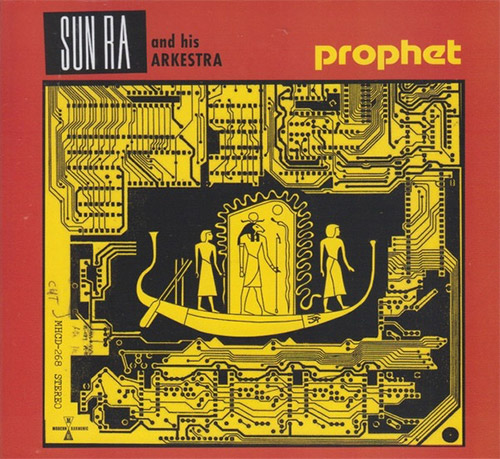

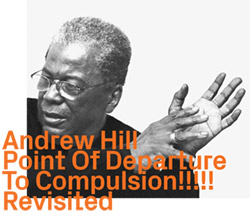
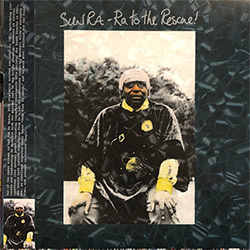
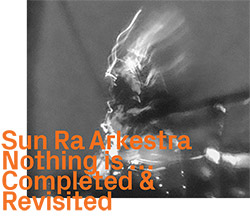
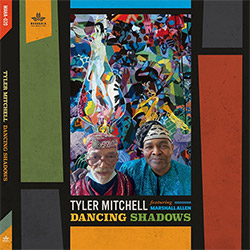




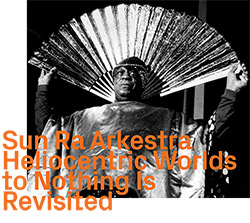
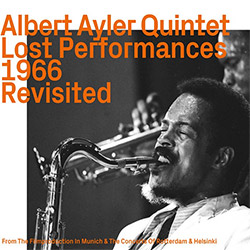
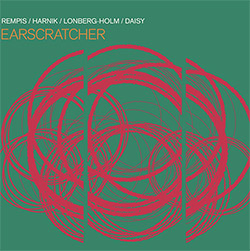
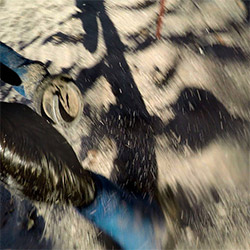

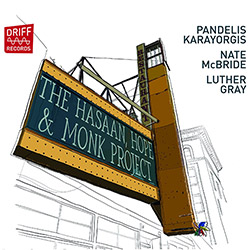


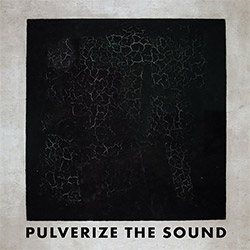

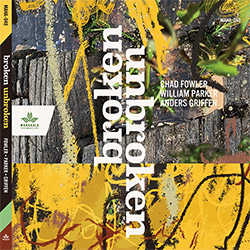
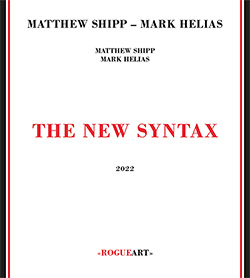
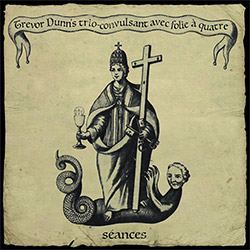
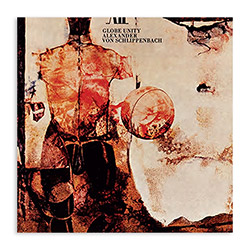
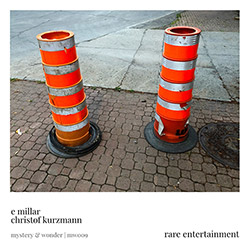
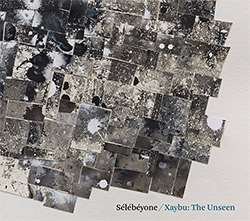



![Guy, Barry / Ken Vandermark: Occasional Poems [2 CDs]](https://www.teuthida.com/productImages/misc4/34849.jpg)
![Novoa / Carter / Mela Trio: Vol.1 [VINYL]](https://www.teuthida.com/productImages/misc4/35236.jpg)


![Elephant9 : Mythical River [VINYL]](https://www.teuthida.com/productImages/misc4/34624.jpg)
![Evans, Peter (Evans / Eldh / Black): Extra [VINYL]](https://www.teuthida.com/productImages/misc4/35279.jpg)

![McPhee, Joe: Straight Up, Without Wings [BOOK]](https://www.teuthida.com/productImages/misc4/35454.jpg)
![Jeck, Philip: rpm [2 CDs]](https://www.teuthida.com/productImages/misc4/35455.jpg)













![Barker / Parker / Irabagon: Bakunawa [VINYL]](https://www.teuthida.com/productImages/misc4/35533.jpg)
![Blaser, Samuel / Marc Ducret / Peter Bruun: Dark Was The Night, Cold Was The Ground [VINYL 10-inch]](https://www.teuthida.com/productImages/misc4/35492.jpg)








![Warren, Kenny (Warren / Hoffman / Ellman): Sweet World [VINYL]](https://www.teuthida.com/productImages/misc4/35451.jpg)




![Blake, Ran / Dave Knife Fabris: Live Amsterdam 2006, First Visit [CD + POSTCARDS]](https://www.teuthida.com/productImages/misc4/35275.jpg)













![DNS: Taking Big Bites Of The Khandas Three Cafes Deep [2 CDs]](https://www.teuthida.com/productImages/misc4/35334.jpg)




![Cleaver, Gerald: The Process [VINYL]](https://www.teuthida.com/productImages/misc4/34966.jpg)




![Alva Noto: HYbr:ID II [VINYL 2 LPs]](https://www.teuthida.com/productImages/misc4/35201.jpg)

![Baron, Derek / Luke Martin: Distinct and Concealed [CASSETTE + DOWNLOAD]](https://www.teuthida.com/productImages/misc4/35079.jpg)

![Lyle, Erica Dawn : Colonial Motels [CASSETTE + DOWNLOAD]](https://www.teuthida.com/productImages/misc4/35080.jpg)









![Sanna, Claudio: Compositori Sardi Contemporanei II [2 CDs]](https://www.teuthida.com/productImages/misc4/35317.jpg)







![Zurria, Manuel: Fame di Vento [3 CDs]](https://www.teuthida.com/productImages/misc4/35167.jpg)

![Granberg, Magnus / Nattens Inbrott / Skogen: Holde Traume, Kehret Wieder! [2 CDs]](https://www.teuthida.com/productImages/misc4/35038.jpg)
![Frey, Jurg: Outermost Melodie [2 CDs]](https://www.teuthida.com/productImages/misc4/35039.jpg)

![Pavone, Jessica: Reverse Bloom [VINYL]](https://www.teuthida.com/productImages/misc4/34895.jpg)




![Modney (Modney / Wooley / Gentile / Roberts / Pluta / Symthe / ...): Ascending Primes [2 CDs]](https://www.teuthida.com/productImages/misc4/34852.jpg)









![Elephant9 with Terje Rypdal: Catching Fire [VINYL 2 LPs]](https://www.teuthida.com/productImages/misc4/35355.jpg)
![Deerlady (Obomsawin, Mali / Magdalena Abrego): Greatest Hits [VINYL]](https://www.teuthida.com/productImages/misc4/34876.jpg)




![Haino, Keiji: Black Blues [2 CDs]](https://www.teuthida.com/productImages/misc4/35109.jpg)



![Surplus 1980: Illusion of Consistency [CD]](https://www.teuthida.com/productImages/misc4/35069.jpg)
![Staiano, Moe: Away Towards the Light [VINYL + DOWNLOAD]](https://www.teuthida.com/productImages/misc4/35037.jpg)



![Caveira (Gomes / Sousa / Abras / Ferrandini): Ficar Vivo [VINYL]](https://www.teuthida.com/productImages/misc4/34643.jpg)
![Gregg, J. J. / David Van Auken: Lunar Prairie [CD w/ DOWNLOAD]](https://www.teuthida.com/productImages/misc4/34611.jpg)

![Coultrain: Mundus [VINYL]](https://www.teuthida.com/productImages/misc4/32439.jpg)
![Mattin: Songbook #6 [VINYL]](https://www.teuthida.com/productImages/misc4/27317.jpg)
![Punkappella: Wake Up [7-inch VINYL]](https://www.teuthida.com/productImages/misc4/17519.jpg)
![Residents, The: WARNING: UNiNC.: Live And Experimental Recordings 1971-1972 [VINYL 2 LPs]](https://www.teuthida.com/productImages/misc4/31521.jpg)
![Coultrain: Phantasmagoria [VINYL]](https://www.teuthida.com/productImages/misc4/30142.jpg)
![Lennon, Sean Ono: Asterisms [VINYL]](https://www.teuthida.com/productImages/misc4/34517.jpg)

![Coley, Byron: Dating Tips for Touring Bands [VINYL]](https://www.teuthida.com/productImages/misc4/17906.jpg)

![Lost Kisses: My Life is Sad & Funny [DVD]](https://www.teuthida.com/productImages/misc4/lostKissesDVD.jpg)